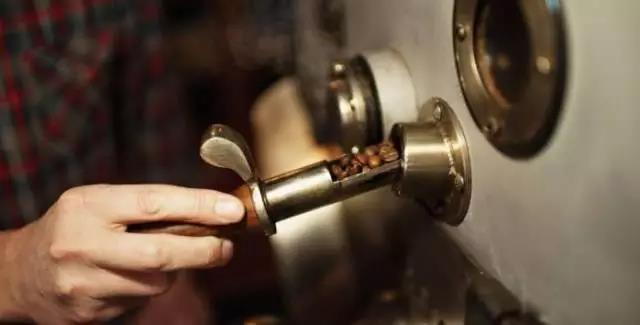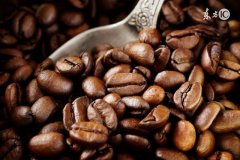The three main streams of coffee roasting: analysis and explanation of the characteristics of direct fire, semi-hot air and hot air

For professional baristas, please follow the coffee workshop (Wechat official account cafe_style)
Coffee roasting and frying can be divided into three categories: straight fire, semi-hot air, hot air and so on.
Direct fire type:
In the roasting coffee, the straight fire is the most difficult, the flavor is the most charming, and the so-called baking process can be trained. The roasting beans baked according to the baker's personality are also different, and the maximum amount of roasting per pot is more difficult to produce in large quantities, so it is only supplied by small bakeries at present. Generally speaking, the heat sources of direct fire are: gas, electric heating pipe, infrared, far infrared, charcoal fire. The key point is that the boiler has meshes, and the more holes it has, the more it can give play to the characteristics of direct fire.
The roasted straight-fire coffee has a steady flavor, which can completely release the honey or caramel sweetness of the coffee itself in the heat conversion (commonly known as pyrolysis or Mena reaction). The aroma and flavor is high, and the aroma and flavor of the coffee can be sealed in the juice and gradually melted in the mouth, showing a practical feeling like waves of fragrance.
When the second explosion is completely over, the straight beans will emit special flavors such as incense and sandalwood when they are grinded. The taste is rich, bitter and sweet when cooking, and the aroma is like the bass horn in an orchestra, shaking the taste response in the mouth.
In an explosion of straight beans, the advantages of raw beans can be completely released. Take Yega Snow Fine MAO in Ethiopia as an example, 20 seconds before the end of the explosion, the beans can be obviously smelled of flowers and citrus in the cooling stage. After the fragrance is displayed, the tail rhyme has the unique cocoa flavor of mocha beans, which is very charming. Put it for about 30 days before cooking, and the fragrance shows more. The fragrance of the flowers is more diverse and unrestrained (but the dried beans can't be kept for that long, because they will be sour to explode), and cold shrinking treatment can get a brighter flavor.
In the period from the complete end of the first explosion to the initial stage of the second explosion, the direct hot beans have a balanced flavor, the sweetness and aroma of ripe fruit, and the smooth sweetness of caramel and honey during the pyrolysis of coffee beans. the baking degree at this stage is easier for brewers to show the flavor of coffee, which is very suitable for people who are not infatuated with very shallow roasting or very deep roasting flavor. For the cooking water temperature is not required to be accurate to obtain a good cooking quality.
Its disadvantages are most likely to be caused by improper firepower and throttle configuration in the baking process:
1. Beans have a high sense of dryness (it is useless to raise beans, they will turn into oxygen beans, and coffee beans will turn sour over time)
two。 Undercooked bean core causes astringency and spicy tongue bite.
3. Poor exhaust and burning silver skin in the bean bucket cause the beans to smell of smoke and dryness (not tobacco or cigar), resulting in a sense of numbness.
4. Improper allocation of firepower results in the carbonization of the skin of beans and the bitter taste of coffee (this bitterness is not sweet, but becomes more and more bitter after cooling, just like the monotonous bitterness of cheap Roma).
Direct fire power, throttle, speed control (basically not so important, a small amount of fast speed, a large amount of slow speed, but also just a reference, is not the only answer, can be manipulated through firepower and throttle to make the flavor as close as possible), will affect the flavor performance of coffee, there is no only answer, coffee roasting is to enlarge the taste of coffee Because of the flavor shortcomings caused by different roasting and cooking methods, hand-selected raw beans and only expensive selected raw beans are not the only answer. Good baking is right, other additional conditions (hand-selected, high-quality raw beans … Etc.), just let the good roasting better show the taste of coffee. Only good roasting techniques and good cooking techniques can make it the finishing touch, and only good roasting techniques and good selection of raw coffee beans can rob the hearts of people with exquisite flavor.
Important Notice :
前街咖啡 FrontStreet Coffee has moved to new addredd:
FrontStreet Coffee Address: 315,Donghua East Road,GuangZhou
Tel:020 38364473
- Prev

Preservation and grinding of coffee roasted beans
The exchange of professional baristas please pay attention to the division of labor of coffee beans in the coffee workshop (Wechat official account cafe_style). There is knowledge in each stage. From the professional knowledge of planting, production, baking, brewing and other professional knowledge, it may be enough for everyone to have a general understanding, pay attention to the division of labor and specialty, and leave the specialty of planting and production to the coffee merchant, but roasting, grinding and brewing coffee is the responsibility of you and my users.
- Next

Coffee bag one-way exhaust valve what is the role? How long is it suitable for preservation?
Professional barista communication, please pay attention to coffee workshop (Weixin Official Accounts cafe_style) Freshly roasted beans will not extend the best tasting period of coffee (1 month golden period) because they are put into the clamping belt with one-way ventilation holes. One-way ventilation hole packaging design, more suitable for a large number of baking packaging after long-term storage use, such as hypermarkets marked with a shelf life of 6 months or 1 year coffee
Related
- Beginners will see the "Coffee pull flower" guide!
- What is the difference between ice blog purified milk and ordinary milk coffee?
- Why is the Philippines the largest producer of crops in Liberia?
- For coffee extraction, should the fine powder be retained?
- How does extracted espresso fill pressed powder? How much strength does it take to press the powder?
- How to make jasmine cold extract coffee? Is the jasmine + latte good?
- Will this little toy really make the coffee taste better? How does Lily Drip affect coffee extraction?
- Will the action of slapping the filter cup also affect coffee extraction?
- What's the difference between powder-to-water ratio and powder-to-liquid ratio?
- What is the Ethiopian local species? What does it have to do with Heirloom native species?

